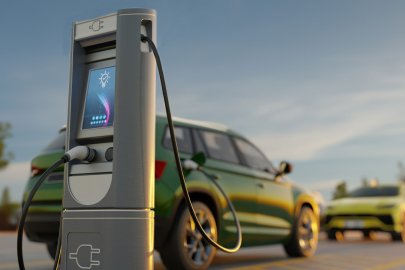Electrification converts an energy-consuming device, system, or sector from non-electric sources of energy to electricity. It’s an emerging economy-wide decarbonization strategy that is beginning to impact the electric power industry.
Electrification is not necessarily the goal, rather a means to achieving a community goal such as reducing greenhouse gas emissions or lowering energy costs. For utilities, the goal—or the benefits—of electrification might be to support system optimization, improve efficiencies, and increase resiliency. Ultimately, people and businesses will choose beneficial electric technologies.
Why Electrify?
Carbon Reduction
Electrification is at the heart of carbon neutrality. If electricity can be generated using clean, renewable energy sources such as wind and solar--even with fossil fuels in the generation mix--switching to EVs and other electrification technologies can lower overall emissions.
Saving Consumers Money
Electrification technologies are often more energy efficient than fossil fuels. While consumers may see an increase in their electric bill, their overall energy costs will decrease as fossil-fueled technologies are replaced with electric technologies.
Support Grid Flexibility
Electrification technologies act as grid resources for operational flexibility to shape, shift, and discharge electricity at optimal times. Using electricity when it is cheap (i.e., at night when demand is low) or when excess solar is available allows utilities to avoid purchasing expensive power at peak times. This flexibility in energy usage also allows utilities to optimize existing distribution assets and renewable generation assets, rather than investing in additional infrastructure.
Beneficial Electrification
While electrification can provide many benefits, it is not always the right strategy for every community and may even have unintended negative consequences. “Beneficial electrification” is a term coined by Keith Dennis, a vice president at NRECA and the Director of the Beneficial Electrification League. The term can help determine—at a very high level—if a plan to electrify a sector will have a net positive outcome for the community. For electrification to be beneficial, electricity to end-uses must satisfy at least one condition without adversely affecting the others:
- Saves consumers money over time
- Benefits the environment and reduces greenhouse gas emissions
- Improves product quality or consumer quality of life
- Fosters a more robust or resilient grid.
What Sectors Are Electrifying?
Transportation, buildings, industry, and agriculture are the economic sectors that are beginning to electrify. Within the transportation sector, individual light-duty electric vehicles (EVs) are increasing in popularity. Companies are electrifying their fleets of medium- and heavy-duty vehicles to improve air quality through reduced emissions. Some cities have set goals to electrify public transportation, school bus fleets, airports and shipyards.
New residential and commercial buildings now include electric appliances, including heat pumps, water heaters, and electric or induction cooktops, while existing buildings are being retrofitted with electric technology that is more efficient, reliable, and flexible.
The electrification of industrial processes and equipment, such as electric forklifts or rock crushers, can improve indoor air quality and lower noise levels in plants, factories, and warehouses. In agribusiness, electrifying farm equipment like tractors, field sprayers, and waste lagoon pumps will provide energy and maintenance cost savings.





